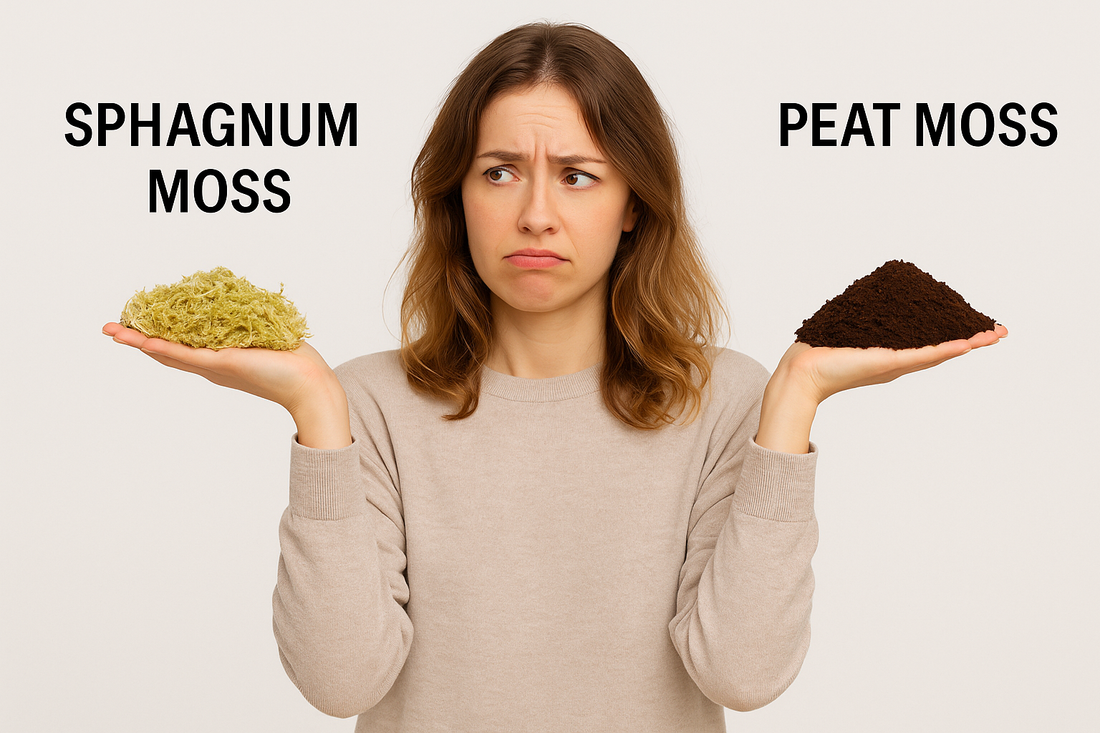
Sphagnum Moss vs. Peat Moss: What's the Difference?
Share
If you’ve ever strolled through a garden centre, you’ve probably seen both sphagnum moss and peat moss on the shelves. The names are often used interchangeably, which can be confusing. While they both come from the same family of mosses, they’re quite different in appearance, texture, and even how they’re used in gardening. Understanding these differences will help you choose the right one for your plants and avoid a costly mix-up.
What is Sphagnum Moss?
Sphagnum moss is the living or recently harvested plant material collected from the upper layers of bogs and wetlands. It’s light, fluffy, and fibrous, with a striking ability to hold up to 20 times its weight in water. Because of this, it’s commonly used in hanging baskets, orchid cultivation, seed germination, terrariums, and even reptile habitats.
Gardeners love sphagnum moss for its clean structure and versatility. It’s easy to handle, long-lasting, and naturally antiseptic, helping protect delicate roots from disease. In New Zealand, companies like MagicMoss are known worldwide for producing premium, sustainably harvested sphagnum moss.

What is Peat Moss?
Peat moss, on the other hand, is the decayed, decomposed layer of sphagnum moss and other organic matter found deeper down in bogs. It takes thousands of years to form, making it a non-renewable resource on a human timescale.
Peat moss has a fine, soil-like texture. It’s brown rather than green or golden, and it’s widely used in potting mixes and soil improvement. Because it’s slightly acidic, peat moss is especially popular for acid-loving plants such as blueberries, camellias, and azaleas.

Key Differences Between the Two
1. Age and Formation
Sphagnum moss: Fresh, fibrous plant material from the top layer of bogs.
Peat moss: Decomposed organic matter, formed over thousands of years.
2. Texture and Appearance
Sphagnum moss: Fluffy, stringy, golden to green, and springy.
Peat moss: Dark brown, soil-like, crumbly.
3. Moisture Retention
Both retain water well, but sphagnum moss releases it slowly and evenly around plant roots, while peat moss holds water within soil mixes.
4. Sustainability
Sphagnum moss: Can be harvested sustainably when managed carefully.
Peat moss: Considered less sustainable because it takes centuries to regenerate.
5. Common Uses
Sphagnum moss: Hanging baskets, orchids, terrariums, air-layering, animal enclosures.
Peat moss: Soil amendment, potting mix ingredient, especially for acid-loving plants.
Which One Should You Choose?
If you’re working with orchids, bonsai, or terrariums, sphagnum moss is the clear winner. Its texture and antiseptic properties protect delicate roots while maintaining ideal moisture. For improving soil structure, holding nutrients, and growing plants that love acidic conditions, peat moss is the go-to choice.
Final Thoughts
Although both products come from the same plant family, sphagnum moss and peat moss are far from identical. Knowing the difference helps you make smarter decisions in the garden and choose the most sustainable option. If you’re in New Zealand, you’re in luck—premium MagicMoss sphagnum moss is widely available. And for those abroad, especially in the U.S., keep an eye out—this Kiwi favourite will soon be crossing oceans to bring a little moss magic to your garden too.
